Migrants From “Culturally Distant Countries” Are Already Here, in Their Hundreds of Thousands. They Were Invited by the PiS Government
For conservative parties, the signals coming from Brussels are worrying. The EU Council has agreed to relocate refugees — or, alternatively, to charge Member States for refusing to take them in.
There’s a long way to go before the new rules come into force, and the potential payments are actually very small, but conservative politicians and commentators are sounding the alarm.
“This is a mockery of Poland, it’s discrimination, it’s extremely brazen!” Jarosław Kaczyński shouts in the Sejm (the lower house of the Polish parliament, Translator’s note).
“That’s why we will not agree to it. And the Polish nation doesn’t agree either. This issue will have to be put to a referendum,” the leader of the Law and Justice party (PiS) declares, trying to reverse his party’s poor start to the election campaign.
Prime Minister Mateusz Morawiecki thunders: “The PiS government is the guardian of the security and cultural cohesion of our nation and state.”
MEP Witold Waszczykowski wrings his hands: “This is a recipe for the complete disintegration of our states by huge groups of emigrants.”
Editor Michał Karnowski worries: “Let’s not forget that there is an ideological goal behind this: migrants from culturally distant countries are ‘more valuable’ because they are supposed to ‘enrich’ us culturally, change our customs, social life, and the role of Christianity in public life. This is how it has been done in many Western countries; these are the goals they have set for themselves in this round.”
Too late.
Migrants from “culturally distant countries” are already here, in their hundreds of thousands. They were invited by the PiS government.
A fairytale Europe
In 2015, the last year of the Civic Platform government, officials issued 65,000 work permits to non-EU foreigners (EU citizens do not need such permits). In 2021, 504,000 such permits were issued. The following year: 365,000. These are not figures pulled from a left-wing institute, but official data from the Ministry of Family and Social Policy.
Under PiS rule, Poland has become a leader in terms of openness to non–European migrants. No other EU country receives as many foreign workers.
Those who assume that most of them are our Ukrainian brothers are wrong.
In 2022, the government issued 85,000 work permits to Ukrainians, less than a quarter of the total. The rest of the workers came from such “culturally close” countries as Uzbekistan (33,000 permits), Turkey (25,000), India (41,000), the Philippines (22,000) or Bangladesh (13,000).
2021 was a record year even before Putin’s attack on Ukraine. The number of permits issued was already hovering around 400,000 decisions per year. Covid did not stop this — on the contrary. Poland was one of the few countries that did not close its borders during the pandemic, for example to Filipinos.
An important and sometimes illegal business has developed around the employment of workers from far-away countries.
It begins like the case of Antonio and Miguel, two friends from a fishing village in Mexico. Working in construction, at the market, or as fishermen, they barely earned enough to meet their basic needs until an elegant, middle-aged man arrived in their village.
The recruiter spun fairytale visions of work in Europe. Antonio and Miguel had to pay three thousand dollars within a few days. The man arranged visas, plane tickets, accommodation and a job in Poland. They ended up in a small house near Jarocin.
Two bathrooms and a kitchen for 22 people. Bunk beds, seven to a room. They worked 8, 10 and sometimes 12 hours a day, carrying heavy crates of cattle carcasses. Miguel developed a hernia, but his supervisor at the employment agency shouted that the company would deduct 150 zloty from his wages for every day he missed work.
I described the story of Antonio, Miguel, and other migrants from South America in a report for the daily Duży Format Gazeta Wyborcza.
Orlen will also benefit
Local recruiters in Asia and South America work with employment agencies in Poland to find cheap labour. They promise to do all the paperwork, but charge a hefty fee. Three thousand dollars actually sounds reasonable, considering I’ve heard of Filipinos paying five thousand dollars. Those eager to travel often borrow from family or take money from non-bank financial institutions.
“A recruiter told me ‘Just smile’!” Marlon from the Philippines told me. “I was surprised because the embassy officials didn’t ask any questions. They just asked me to sign the documents and told me to pick up my visa in two weeks.”
Workers from Asia and South America often end up in slaughterhouses, cold stores, poultry factories, logistics warehouses or production lines. Companies hire these workers and the agency takes care of everything: accommodation, transport to the factory, wages, insurance.
Thousands of them live in rented houses, barracks and containers scattered in towns and villages across Poland. The only time locals see them is at dawn, when they pass through the factory gates, or in the evening, when they go shopping at Lidl.
Agencies employing Filipinos charge between 33 and 37 zloty per hour of migrant labour. Of this, a maximum of 20 zloty goes to the worker; the company keeps the rest.
Migrants earn the minimum hourly wage, and sometimes less, as their bosses can be very creative. Workers have deductions from their wages for accommodation, even if it’s an unheated container, for work clothes, for transport to the factory, for obtaining work permits… Instead of the promised $1,500 a month, Miguel and Antonio earned 1,300 zlotys, well below the national minimum wage.
The Polish state is actively supporting this new industry by issuing permits and visas en masse. And the government itself benefits from the cheap labour.
A few weeks ago, I visited the construction site of Polimery Police — a huge factory being built by the Grupa Azoty, one of the state’s giants. Almost all the workers there were from the Philippines and India. They worked 13-hour days with no right to rest or paid sick leave. Most of them were later to be transferred to the construction of the Orlen refinery near Plock.
The unluckiest minister in history
Now the key question: why is the government kicking out refugees with one hand and opening the door to hundreds of thousands of migrants with the other?
For the sake of this text, let’s imagine that we are discussing this with a right-wing commentator who explains that refugees — like those on the border with Belarus — are trying to enter Poland illegally, and that they are doing so at the instigation of a hostile regime. We can’t monitor them; we don’t know if they pose a threat.
On the other hand, workers who come to work enter Poland legally, at our invitation.
Let’s leave aside the discussion regarding the “legality” of the refugees who have been denied the right to asylum by the Polish government. OKO.Press readers are well aware of the situation on the border with Belarus, as my colleagues have written about it several times.
Let’s take the point of view of a right-winger for a moment and ask: is “legality” and control of migrants really a core value of this government? I’m not convinced.
Everything seems to point to diplomatic missions issuing visas “automatically.”
I’ve heard many stories like Marlon’s. Filipinos and workers of other nationalities answer a few general questions at the embassy, or none at all, or don’t even visit the embassy because recruiters submit documents on their behalf.
“Well, at least we have them under control in Poland,” our commentator will say. This is only partly true. The Polish state, in the form of provincial offices, issues residence cards that have to be renewed periodically. In this way, officials have some control over people who want to stay in Poland legally. On the other hand, we don’t even know how many of these people live in our country.
While working on one of my articles, I tried to find out how many Guatemalans work in Poland. For a month I went back and forth between the Office for Foreigners and the Ministry of Foreign Affairs. I never got an answer.
If I had looked at the data from the Ministry of Family Affairs, I would have learned that in 2022, 347 work permits were issued to Guatemalans. Does this mean that there are 347 Guatemalans in Poland? Not necessarily, because this number only includes new and renewed permits issued that year. And if someone has a three-year permit, for example, they won’t appear in this statistic. It also doesn’t include migrants who came on tourist visas or those who came from other Schengen countries.
As I mentioned earlier, according to the ministry, 504,000 foreigners received work permits in 2021. However, Eurostat reports that Poland issued 790,000 such permits. Why is there a discrepancy? Because Eurostat uses data from the Office for Foreigners. So two different government institutions count the number of migrants working in Poland differently.
Incidentally, even if we accept that this lower figure is true, Poland is still the clear leader in the EU in terms of foreigners admitted. Spain, in second place, issued only 88,000 work permits. And we’re talking about 2021, before the war broke out.
What’s more, the PiS party is not concerned with the “legality” of migrants. The signal sent to voters is different: we will not accept foreigners from other cultures. No one, whether legal or illegal.
In 2018, Paweł Chorąży, the deputy minister for investment and development, lost his job after publicly stating that “the influx of immigrants to our country must increase in order to maintain economic growth.”
He added that Poland should accept immigrants because it is thanks to them that “prosperity is built in countries that have achieved success.” Mateusz Morawiecki rebuked his subordinate, saying that the deputy minister had “definitely got ahead of himself in some of his statements.”
Chorąży is probably the unluckiest minister in history. He was sacked for telling the truth, which was in line with his government’s policy.
Will they work and then go back?
Is it simply a matter of “cultural differences?” Our right-wing commentator could explain to us that “different cultural backgrounds simply mean Muslims; but Catholics, even from the other side of the world, are welcome here.”
It’s an interesting thesis — but completely wrong.
In 2020, Janusz Kowalski, then a member of the Solidarna Polska party, argued that Rafał Trzaskowski, then a presidential candidate, “would accept any number of culturally alien Muslim immigrants at the snap of Berlin’s fingers.”
Mr. Deputy! Don’t be so afraid of Trzaskowski. The government, of which you are a member, has managed this task perfectly on its own.
After all, Turkey (remember: 25,000 permits per year), Uzbekistan (33,000) or Bangladesh (13,000) are predominantly Muslim countries.
In 2022 — as Platforma MEP Elżbieta Łukacijewska pointed out — the PiS government accepted a total of 136,000 migrants from countries where Islam is the dominant religion.
Just so you know, the PiS won the 2015 elections on the basis of its firm opposition to accepting 7,000 Muslim refugees in Poland.
Seven thousand.
True, a certain employment agency specialising in bringing in Filipinos argues that they will make good workers because they are culturally close to us — after all, Catholicism is the dominant religion in the Philippines.
This may be an argument for some employers, but I doubt it. “Cultural similarity” does not play a role in bringing in cheap labour, because the only important factor is the “cheapness” of that labour. Besides, embassy and consulate officials issuing visas do not ask anyone whether they are really Catholic.
“But wait!” — our right-wing commentator might exclaim. “Refugees from the Belarusian border will be lured to Europe to sit on welfare and change the culture of the entire continent. Meanwhile, economic migrants will work for a while until their contracts expire and then politely return home.”
Oh, the naivety!
Perhaps some foreigners will work for a few years and return home, but many, perhaps the majority, will stay.
Like Marlon from the mountain town in the Philippines, who started his adventure in Poland by running around a drugstore warehouse for 12 hours a day. Today he has an office job and an idea for his own business. He sees Poland, with its fast-growing economy, as a land of opportunity.
Like Joan from Manila, who came to Poland to assemble windows in a factory in the Podlasie region and now works as a childminder in Warsaw. Her daughter, Dorothy, has already moved to Poland. She is studying at a private university and says it is her destiny to stay here.
Like Lucia from Guatemala, who was verbally abused by the slaughterhouse manager — he shouted “Fuck, damn it” and threw pieces of meat at her. She had to grit her teeth and go back to work, praying to God to give her the strength to carry on. She would like to see her daughter again, but so far there’s no chance. Lucia’s trip to Poland left her with a huge debt, and she can’t return home until she earns enough money to pay it off.
“Poland reminds me of Switzerland 50 years ago. We also thought migrants would come for a while, work and go home. But they stayed forever,” a Swiss journalist working in Poland told me.
Half a century ago, Germany also believed that Turkish guest workers (or Gastarbeiter) would be brought in to work in its factories and plants for just a few years. Today, three million people of Turkish origin live in Germany, and Turks are the country’s largest minority.
We could ask the Dutch, the Belgians, the French or the British about the migrants — will they stay or will they return to their home countries?
“We called for workers and they came,” said the Swiss writer Max Frisch.
So no, dear right-wing commentator, migrants are not going anywhere. They are already here. And they are here to stay.
Better than Ukrainians?
Could it be — and I shudder at such a disgusting thought — that all this anti-refugee rhetoric is just a big show for the elections? And that maybe it will end just when it’s time to talk about money?
And here we are. The answer to why the right-wing government is actively encouraging migration to Poland is clear.
Prime Minister Morawiecki can tell stories about how Poland is catching up with the most developed economies on the continent and “is no longer a reservoir of cheap labour”, but the truth is quite different.
In terms of average labour costs per hour, Poland ranks fifth from the bottom in the EU. It’s even more “cheerful” when it comes to economic innovation — we’re fourth from the bottom.
Meanwhile, one of the engines of the Polish economy is the furniture industry, which reached a value of 56 billion zlotys in 2021 — 20 per cent more than in the previous year. Incidentally, there was the case of a group of Filipinas working in a furniture factory near Wrocław, where the boss took away their passports so they couldn’t look for another job and forced them to work beyond their physical limits. It was only after the intervention of the La Strada Foundation that the women received support.
We are also a leader in road transport. A fifth of all goods transported on European roads are now carried by Polish companies. Strangely enough, this industry also often employs workers from other countries. Exploitation is rampant, as the example of Filipino drivers in a report by TVN’s Superwizjer shows.
The meat industry, worth 72 billion zlotys, is also doing well. This is where Miguel and Antonio from Mexico and Lucia from Guatemala worked.
Migrants are also exploited by international companies as couriers and delivery staff for Uber, Glovo and Stuart. If you are interested in this issue, you can read more about it in my book, where I describe what exploitation in this industry looks like in practice.
What do all these industries have in common? They depend on low labour costs. And they are dominated by foreigners.
There’s nothing wrong with inviting migrants in — as long as we don’t invite them in to exploit them.
Meanwhile, workers from Asia and South America are doing the worst jobs in our country that nobody else wants to do.
“I used to see a lot of Poles and a few Ukrainians, then a few Poles and a lot of Ukrainians. And now, I’m telling you, there are fewer Ukrainians too. They don’t want to work for those wages anymore. More people are coming from Georgia or South America,” I was told by Olena, who works in a meat factory near Jarocin.
Employment agencies offering Filipinos to Polish companies advertise the “goods” with phrases like, “they don’t make such high demands as Ukrainians.”
“Advantages: low demands.”
“Very low turnover, high loyalty.”
“They have a positive effect on the efficiency of other foreigners, including Ukrainians.”
Here’s my thesis: even before the war, Ukrainian workers didn’t want to do the worst jobs for the lowest wages. Because they learned the language quickly, it was easy for them to find new jobs. Polish bosses had a choice: they could either raise wages or look for cheaper and more submissive labour. They chose the latter. Filipinos or Guatemalans who don’t speak the language and who have indebted themselves and their families to come to Poland will not be too “demanding.”
In 2019, Dr Maciej Grodzicki from the Institute of Economics, Finance and Management at the Jagiellonian University told Gazeta.pl: “Everyone keeps saying: ‘Yes, we’re threatened by the middle-income trap, we need to modernise the economy.’ Business organisations keep hosting conferences on the subject. And then the same business organisations appeal to the ruling party to facilitate the influx of immigrants from Bangladesh and East Asia because there is a shortage of workers. And they devote their lobbying efforts to this.”
“Is that bad?” asks the commentator, to which the expert replies:
“It’s bad because it only perpetuates the labour-intensive and outdated way of production in Poland. I’m in favour of opening the borders to migrants. But the government should set a condition for companies: we will let migrants in if you invest in efficient and well-paid jobs.”
Four years and millions of work permits later, it’s clear that the PiS didn’t follow the doctor’s advice.
A strange contradiction
This strange contradiction, with the government importing migrants on the one hand and pretending they aren’t here on the other, is already causing problems. And it will cause even bigger problems in the future.
Poland does not have a migration policy.
The government has no plan to help or integrate migrants. There are no institutions to which they can turn to for help, apart from the overstretched NGOs.
Migrants have no access to free Polish language courses or legal advice. Once in Poland, they are at the mercy of their employers. Exploitation is easy in such a context.
There is no register of unscrupulous employment agencies. Labour inspectors, drastically underfunded and powerless, are supposed to help migrants whose rights are violated.
In extreme cases, victims of fraud can turn to border guards, who can grant them the status of human trafficking victims, allowing them to stay in Poland legally. This is what happened to Lucia, Miguel, Antonio and over thirty other Latin American workers. Thanks to their testimony, the prosecutor’s office and the Border Guard are investigating an employment agency in Zielona Góra. They may be charged with human trafficking, but I wouldn’t bet on it. The definition of trafficking in the penal code is very complex, which makes it difficult to prove in court. Judges often resort to charges related to labour law violations, which result in much lighter sentences for the perpetrators.
Ironically, the PiS party doesn’t boast about its pro-migration policies. So there’s no chance of solving these problems in this government.
And what about the prospect of solving them after the elections and a possible victory of the opposition? I doubt it too, for one simple reason: helping migrants would mean clashing with companies that exploit their difficult situation. It would mean strengthening labour inspectorates and restricting the junk contracts that allow Filipino, Guatemalan and other workers to work up to 300 hours a month without holidays or sick leave. As it happens, labour rights are the same for workers from Poland and elsewhere, so the mechanisms for violating them are the same. It seems unlikely that Civic Platform (PO) politicians would suddenly want to fight against labour market anomalies.
Liberal voters may not want to either. It’s easier to sympathise with refugees camping in the woods near Hajnówka than to notice containers set up on muddy fields outside a chicken factory, or to care about the fate of a Glovo delivery man who has just brought our dinner.
Business owners and liberal commentators can fall back on tired arguments to justify the exploitation of migrants. For example, “if they didn’t like it, they wouldn’t work, nobody forced them to come”. As if someone who doesn’t have enough money to feed their children really has a choice. You can close your eyes to avoid seeing a simple fact: even if it is legal to ask a worker to run around a factory for 13 hours a day for the minimum hourly wage, it is still immoral.
Perhaps no one really wants to know about the migrants holed up in factories and warehouses across the country. Because their presence says unpleasant things about us — for example, that although we never had overseas colonies, we are now happy to benefit from the post-colonial order.
We have gone from being a country that people flee to a country that people come to — from all over the world, not just from nearby countries. We have gone from being the exploited to being the exploiter.
We have to face the fact that our economic success is not based on the hard work and ingenuity of local entrepreneurs. It’s based on exploitation, an area in which we have centuries of rich experience.
Instead of ridiculing Western multiculturalism, we need to admit that we are at the forefront of it.
This time we hear from editor Jacek Karnowski: “We hear that we have to take in 2,000 refugees or pay a fine of 40 million euros. Today that’s not a problem — we’ll pay if we have to. But it’s clear that this is meant to set a precedent. Once this mechanism is introduced, it will be applied endlessly and before we know it, our cities will resemble Paris or Brussels in terms of ethnic diversity. We’ll be faced with the problem of ghettos, no-go zones, crime and a thousand other problems”.
Dear Editor, why all the fuss? It’s the government that you so actively support that brings hundreds of thousands of migrants to the Vistula every year, and yet no ghettos or “no-go” zones have been reported in Poland. But you are right — Polish cities will resemble the West in terms of ethnicity. In fact, they’re already beginning to do so.
Writing in Krytyka Polityczna, columnist Jakub Majmurek argues that it’s the PiS party that has laid the foundations for a multi-ethnic and multicultural Poland. It’s hard to disagree. The conservatives may claim that “they won’t make the mistakes of the West”, but all the evidence suggests that they are the ones orchestrating the biggest multicultural operation in contemporary Europe. And by failing to help or integrate refugees in any way, they are also repeating the worst mistakes of Western Europe.
In 30 years’ time, will we see the emergence of Latin American, Filipino or Turkish neighbourhoods in Poland, where the Polish language will be a rarity and social and economic exclusion an everyday reality? It would be an extraordinary irony if the seeds of the worst right-wing nightmare were sown by none other than a right-wing government.
Editor: Bartosz Kocejko
We Have Betrayed a Generation
I.
I knew that you were slowly leaving us. That night you were in pain, so I took you to the Clinical Centre in Ljubljana. I didn’t want you to die at home, because, in a way, I wanted to spare the children — your grandchildren — from suffering. I didn’t want you to die in the same house as them. I didn’t want a coroner’s van to come down the street and take you out of the house in a coffin. I know you didn’t want everyone to see that.
In hospital, as you waited to be examined, your hands clasped in prayer, you begged me to take you home. I didn’t listen. Soon you lost consciousness. You stopped breathing and were on life support. The doctors looked for a room for you and found one at the end of the corridor. You were alone in the room. The doctor was waiting for me and asked me if I understood the seriousness of your condition. I nodded. At the hospital you were given food and water through tubes. You no longer responded to the world around you, except to turn your head at the sound of my voice and open your eyes for a moment. I lay beside you in the hospital bed and told you that everything was going to be all right. That we would go home soon, that you should squeeze my hand if you could hear me. You moved your finger. I had the horrible thought that your brain was working but your body wasn’t. I told you a hundred times that I loved you, that you were the person I loved most in the world, that we would go home as soon as they brought the pills and turned off the machines. I wanted to give you my smell, my warmth, my hugs — like the baby care books tell us to do. Everything would be fine, I kept telling you. I lied. In our biggest hospital they advised me to transfer you to the hospice in Ljubljana. We waited for the transport . . .
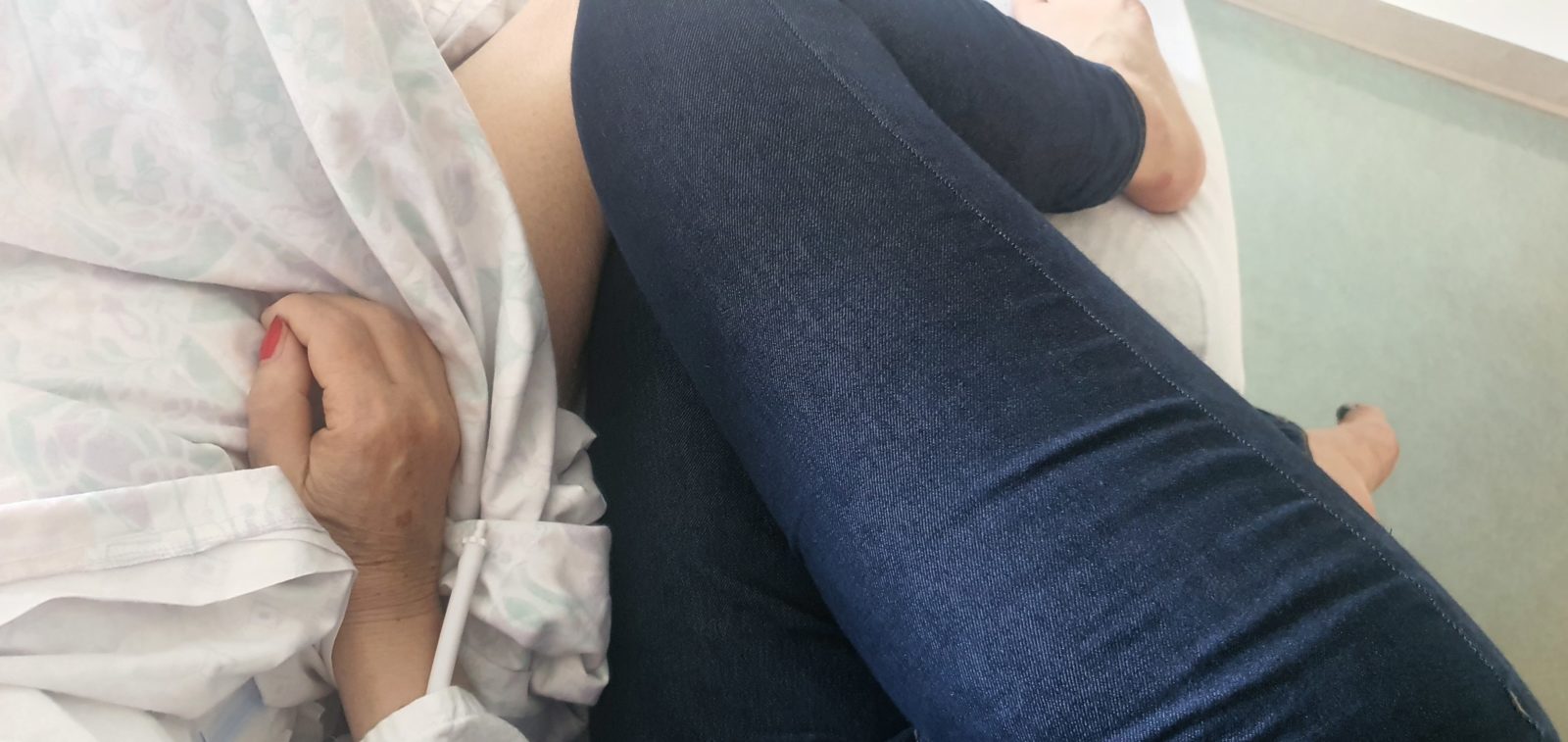
Mum and me in her last hours in hospital.
II.
Silvija Novak and Brigita Kneževič gathered their courage and a month ago shared their experiences at the Bokalce Nursing Home in Ljubljana. Silvija told us that her mother had been immersed in scalding water. Her whole back, legs and arms were burnt and blistered up to the elbows. Her wounds were treated in hospital. The case was also reported to the police. The home admitted to the incident. Once the anger and disappointment had subsided, life went on. Silvija spent every spare moment with her mother, and when the dementia set in, she even helped to feed her so that she could still have a hot meal. The food was delivered in heated trolleys and insulated containers, and there were microwave ovens in all the living units so that the residents could heat it up, said the director of Bokalce, which is west of the capital. But how can a person with dementia or reduced mobility heat their food, wondered Silvija: “I have asked that people with partial disabilities be helped with appropriate cutlery and that their plates be heated, because they always eat cold food. They are served salad on a flat plate, so they can’t eat it with a fork, they just pick it up with their hands — like in a zoo!”
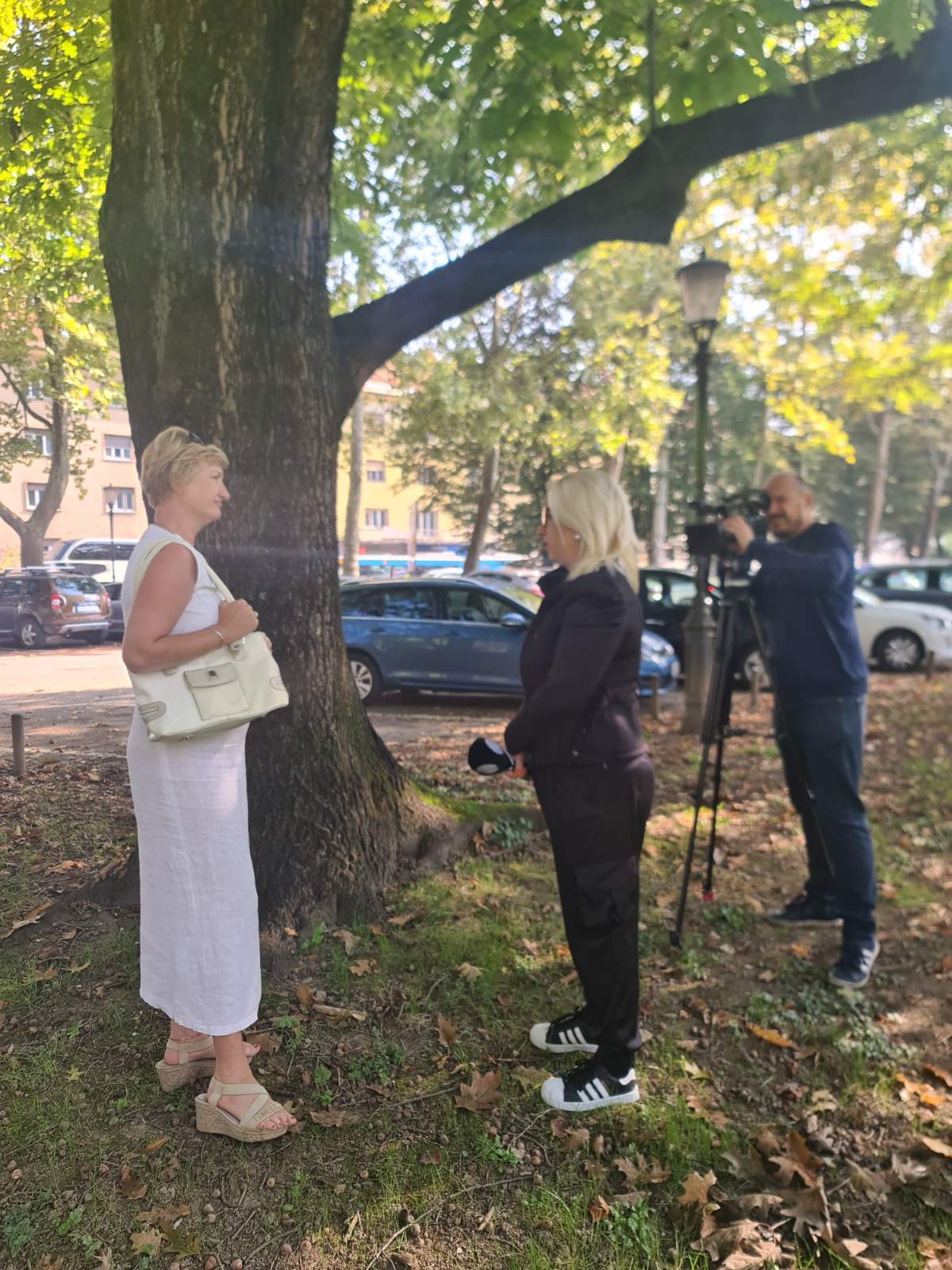
Brigita Kneževič shared story about her mother in retirement home Bokalce
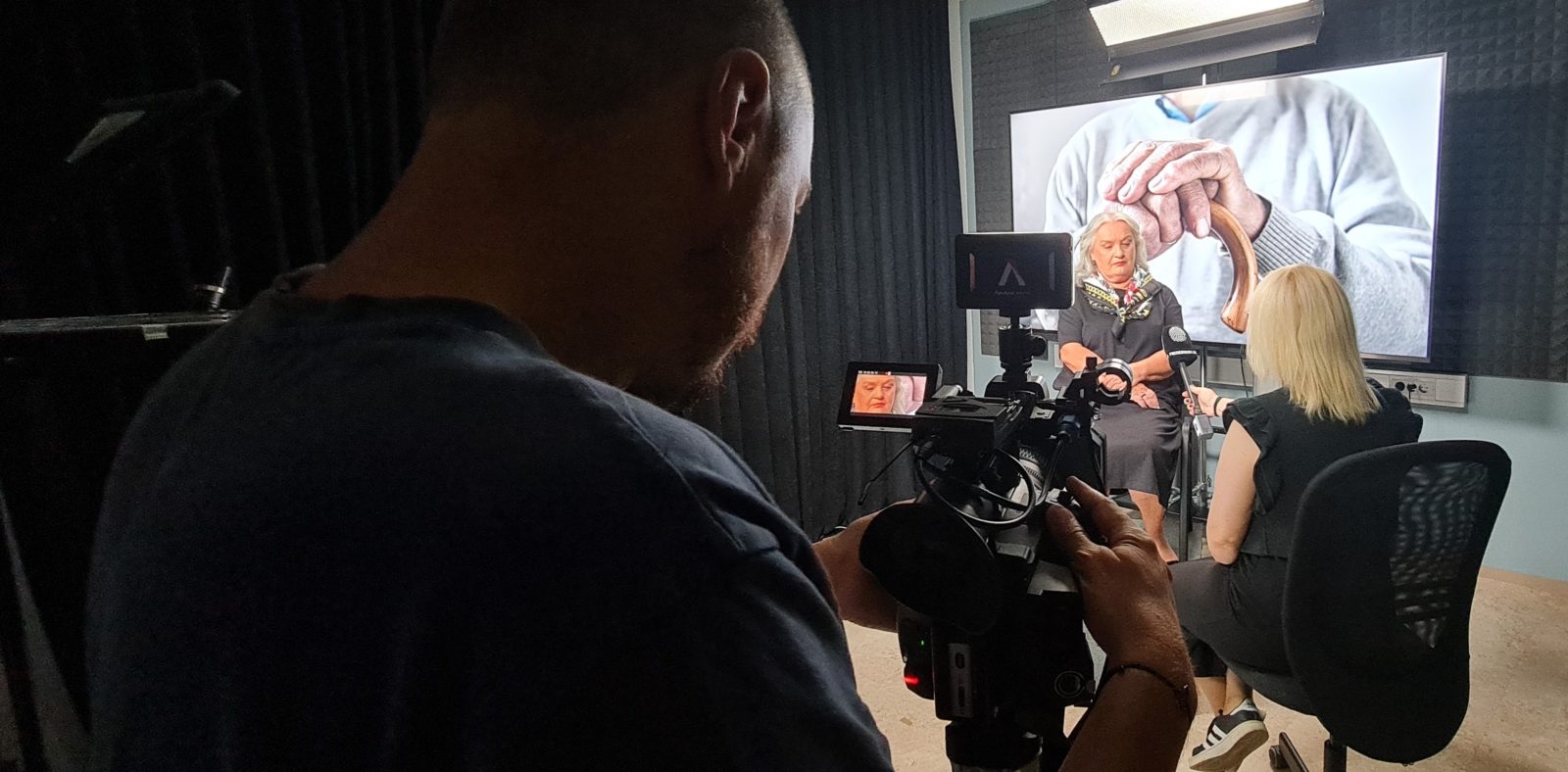
Silva Novak shared the story of her mother in retirement home Bokalce, Slovenia
Brigita Kneževič found her mother with someone else’s dentures in her mouth; she almost choked. She told me about how they swapped beds, and how she could have been given the wrong medicine because of the different name on the edge of the bed. And she told me about the loneliness. In the morning they put her mother in a wheelchair and wheeled her to the window. Hours later they found her, the sun beating down on her overheated face. She couldn’t open her eyes; her pupils had been hit by the strong light for too long.
(None of these claims have yet been resolved, as social and health inspectors are still investigating. There is no broad consensus on who should deal with the elderly and how. Everyone agrees in principle that “a lot needs to be invested in staff training”. We do not have a single quality control system. An elderly person can claim that they are being mistreated and the home can deny it. There is no standard of proof.)
The Slovenian media also picked up a story this year about a student who posted a video of violence against an elderly woman on Tik-Tok. She filmed herself pinching the nose of an immobile resident in a nursing home in Trebnje, then haughtily asking her “What’s wrong?” The elderly woman cries out in pain and tries to protect herself with her hands from the student, who then pulls her hair. The resident is seen pleading with the student, shouting “Stop it!” In response to the video, the Minister for a Solidarity-Based Future, who heads a ministry created by the current government, said that “trends and research show that violence against the elderly is a phenomenon that we as a society need to pay more attention to.” More attention? We need to give it our full attention, not just more. There is no room for tolerance when it comes to violence! Human Rights Ombudsman Peter Svetina also expressed his dismay at the emergence of videos showing violence against the most vulnerable: “This reflects an alarming erosion of values in society. We need to make young people aware that violence is a crime and that such images deserve condemnation, not likes.”
Every year, the Slovenian police record around 320 cases of violence against people over the age of 64 — 200 against women and 120 against men. We must try to imagine that these are 320 people who are abused, beaten, denied water and food. How many are simply abandoned? Something is terribly wrong in our society. Never before have so many stories of violence and inappropriate behaviour towards the elderly been reported in the Slovenian media in one year. For the first time in our country’s history, we have a ministry that deals with the problems of the elderly. But the shortage of staff is worse than ever. It is not only the workers who are prisoners of the uniform wage system, but also the directors of the homes, who have no leverage to attract staff. “More than half of the workers in care homes earn less than the legal minimum wage,” according to the Association of Social Institutions. In other words, less than €878 a month. That’s why the door is wide open to any student who wants to enter the field. There is a shortage of people interested in caring for the elderly, at least in the public sector. But many have taken advantage of the market and offer care for a hefty fee.
The well-known journalist Eugenija Carl described her experience with a violent care worker who abused her mother. It was only the hidden cameras in her flat that revealed what was happening behind the closed doors of her home. Crucially, she believed her mother when she tried to tell her that there was something seriously wrong with the carer. The worker appeared friendly, gentle and caring, but within the walls of the home there was shouting, physical and psychological abuse. After being exposed in Slovenia and reported to the police, the worker extended her activities to neighbouring Italy.
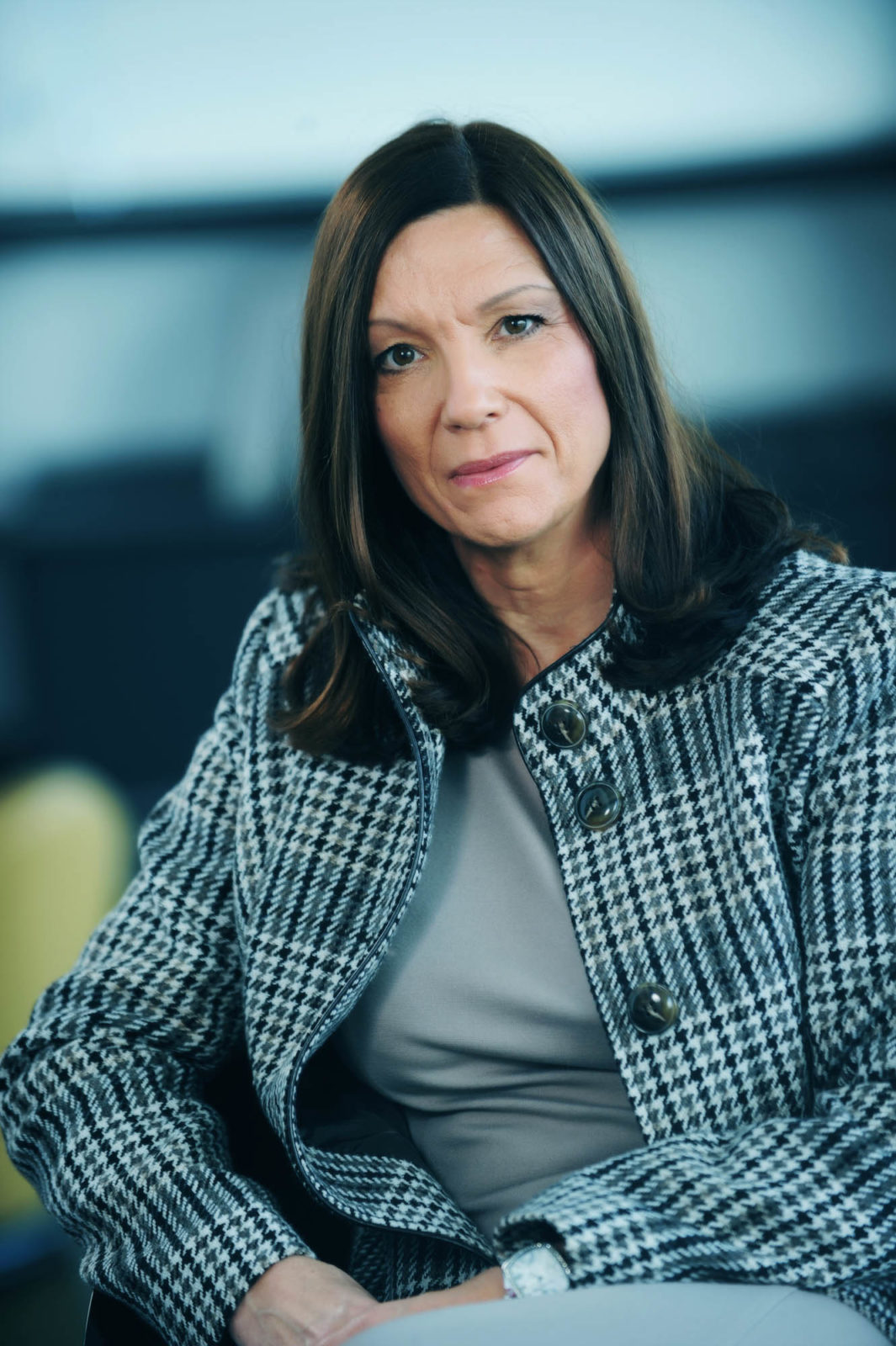
Eugenija Carl, a Slovenian Journalist put cameras in the home of her mother/ Photographer: Mateja J.Potočnik
(Carl has filed a complaint with the police and the public prosecutor’s office. The care worker will be tried.)
From the nursing home in Maribor, there are also stories of abandoned elderly people who spend 15 hours in the same nappy. Some residents haven’t been outside for three years! Staff have accused the director, and a group of them spoke of humiliation, intimidation and confirmed rumours of degrading care. The director denied any improper or inappropriate treatment of the residents. However, it appears that not all the allegations were unfounded. Analysis of professional inspections revealed a number of anomalies and inadequately regulated procedures.
(Despite the proven irregularities and the home’s serious financial problems, the director’s mandate was extended, even against the opposition of the minister responsible. The director is close to the ruling party.)
III.
Deventer is a place in the Netherlands that has made the headlines of the world’s leading newspapers for its bold concept: the Humanitas nursing home is also a home for students. When I visited the facility in 2017, I was greeted by the director, Gea Sijpkes, who, like the managers of all nursing homes in our country, was facing a shortage of staff. In 2012, she started renting rooms to students who couldn’t afford to rent an apartment, in exchange for spending 30 hours of a week with the elderly. I was particularly impressed by one student who wrote a business plan for his thesis with the help of one of the home’s residents. Another student had love problems and was dating a lot. The elderly resident was so eager for information about the dates that he would wait for him until 3am to hear about them. He came alive each time the love story progressed, and when the love faded, he offered a shoulder, warm words and encouragement.
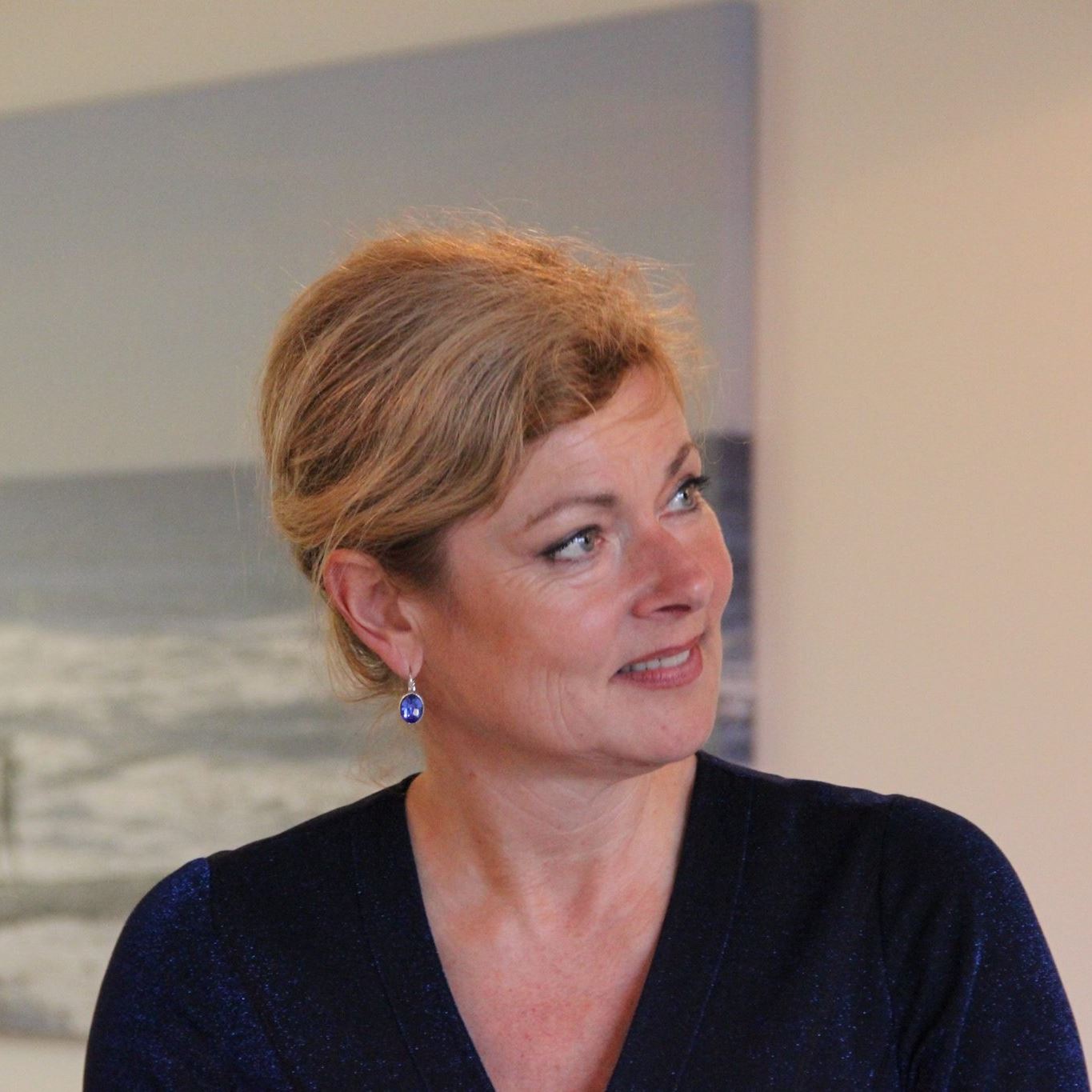
Gea Sijpkes, Director of Humanitas Netherlands / Photo: Gea Sijpkes
Gea Sijpkes says that at first there was a lot of resistance and doubt about the idea of the elderly living side by side with students, with prejudice coming from all sides. “Students don’t have any respect for the elderly, they drink, they have fun”. But it turns out that if you choose people carefully and give them a chance, life in the nursing home becomes livelier. At Humanitas, students make pancakes and play board games with the elderly. When I visited, I saw a young student in a short skirt serving coffee and bringing smiles to the faces of the grey-haired residents, who looked at her affectionately. The director was not upset.
IV.
In Slovenia, around the same time as in the Netherlands, we introduced a good practice in 2012 and turned one of the homes for the elderly into a kindergarten during the summer holidays. During the holidays, many parents did not have childcare, so it was organised in the home. This year, Ana Petrič, director of the Notranje Gorice Home for the Elderly, opened a Montessori kindergarten in the same building. “All the research, practice and projects show that the elderly give a lot to the children and the children give a lot to the elderly,” she said in a post. Interest in enrolment is growing.
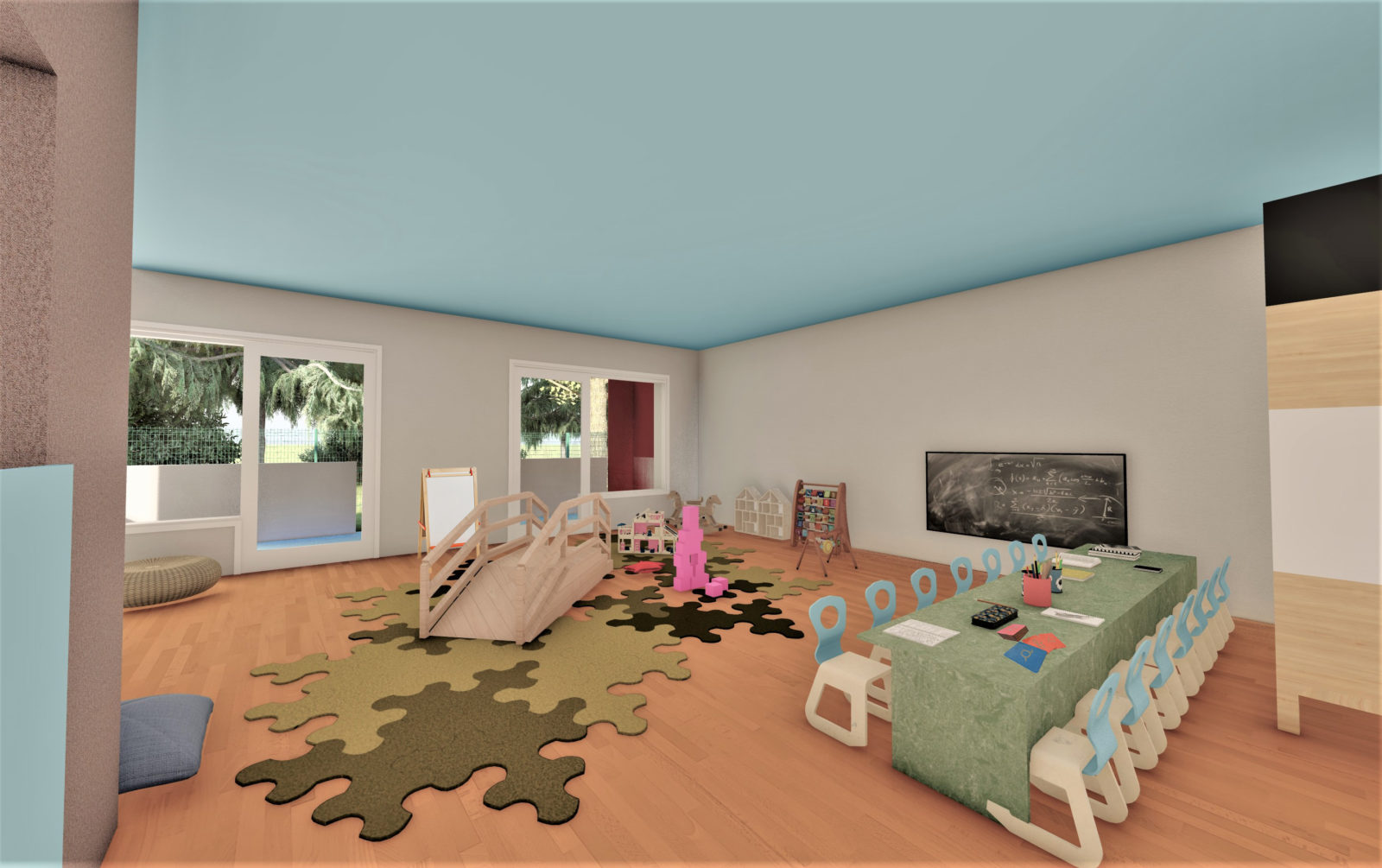
Kinderarten in a Home for the Elderly, Notranjie Gorice

Ana Petrič, director of the Notranjie Gorice Home for the Elderly
You were taken to the hospice by ambulance. Contrary to my expectations, there was no deathly silence, but rather a low, muted buzz. They bathed you. I brought your pillow from home. I hoped that you could smell the familiar scent of home, where, despite your wishes, I hadn’t been able to keep you for the final two days. I lay down next to you, although they said I shouldn’t; they said that all senses are heightened at the end of the journey and that I shouldn’t “cling” to you. I didn’t listen to them. I climbed over the wooden railing and whispered in your ear for the hundredth and two hundredth time that you were the person I loved most in the world. That you were the best mummy. And I cuddled you. Tatjana Fink, the director of the Ljubljana Hospice (Ljubhospic), came several times to ask me how I was and if I needed anything. She monitored you and also prepared me. She literally guided me through the stages of dying. It hurt me when she told me that you would no longer have water and food because it was hospice care. I moistened your mouth with swabs. Every time you swallowed I got confirmation that you weren’t dying yet, and I deluded myself into thinking that maybe you weren’t. That night your breathing changed.
Tatjana asked to see me in the morning. She told me that I had to let you go. She said that I was clinging to you too much and that you were clinging to life. I had to let you go, she said. “If you do that, she will die peacefully,” she told me. I resisted the idea of literally accompanying you to your death. But I did it. Quietly, as if I didn’t want you to hear me, I said you could go. Tell Dad he was the best, too, and give him a hug. Tell him I will look after the gang as usual. I got out of bed and told Tatjana that I was leaving and that I would not be coming back. With tears in my eyes, I told her that my conscience was burning with guilt for telling you that you could go.
An hour after I left, you died. You died exactly as the doctor at the psychiatric hospital in Ljubljana, who had treated you for insomnia, had told me a month earlier. He had ordered a detailed MRI scan, which showed that you would die of a disease other than your primary one. I never told you this.
(I lived with my mother all my life, except for five years. She never had to go into a nursing home.)
Soon we will all be old
The number of old people is increasing everywhere. Soon we will all be old. There will be no one to take care of us unless we have at least one relative or family member willing to do so. On 1 January 2024, the Long-Term Care Act will come into force in Slovenia, which will allow us to receive a salary if we care for a family member. Will we return to our roots and live in large extended families again? Do we have guarantees that there will be less violence behind the walls of nursing homes? We need a new social contract in which we commit ourselves to raising the threshold of compassion for the elderly to the highest level of sensitivity. Nothing shocks society any more. The media may sound the alarm on websites or in print with stories of elder abuse, but in the long run the response is lukewarm. Instead of sensitivity to the world, screens and social media have brought us indifference and habituation. Violence and neglect are part of our lives, so many people simply wave away inadequate care for the elderly. Research shows that babies desperately need touch, cuddles and safe shelter to develop normally. But few write about the tenderness and touch that older people need. Even if not all of them need it, it is important to look deeply into their eyes and express gratitude — and interest. “There has been a deep erosion of values in relation to the older generation,” says Human Rights Ombudsman Peter Svetina. Our grandparents’ generation deserves better. We have found ourselves trapped in a cycle of time scarcity that has pushed us to the wall. With a lump in our throat, we have left our grandmothers and grandfathers in the care of a stranger who often lacks the experience, the will to take care of them, to wash them, to turn them. We have given concessions to large institutions rather than small boutique homes, and appointed political figures as directors, some of whom lack the competence to manage. And we have reached a point where, despite the many irregularities, despite the lack of uniform guidelines, it is impossible to get into a nursing home because the waiting lists are unbearably long. There are empty beds in homes because there is no staff to look after more residents. No one wants to work with the elderly.
Who is going to untie this Gordian knot? And when?

